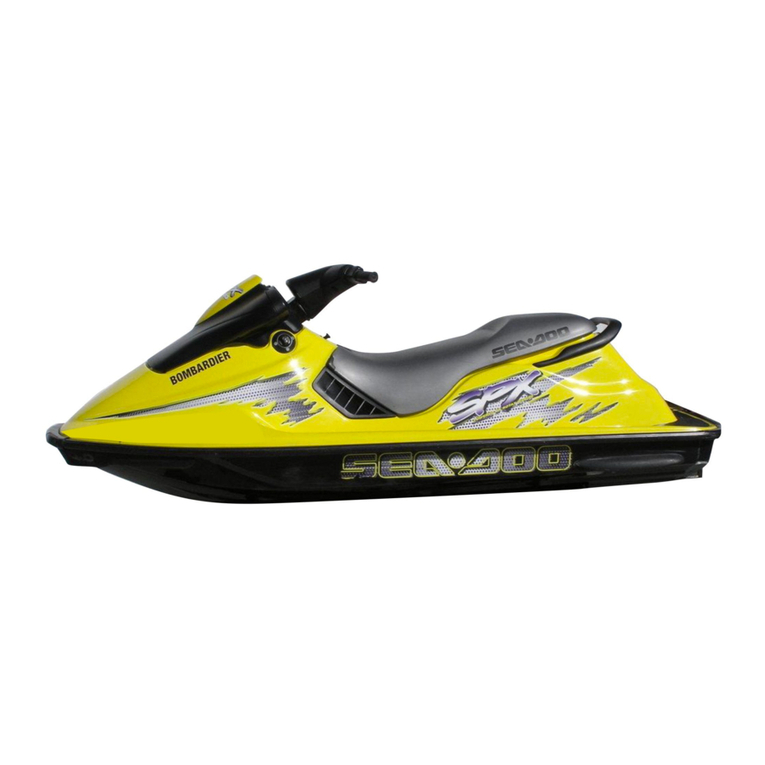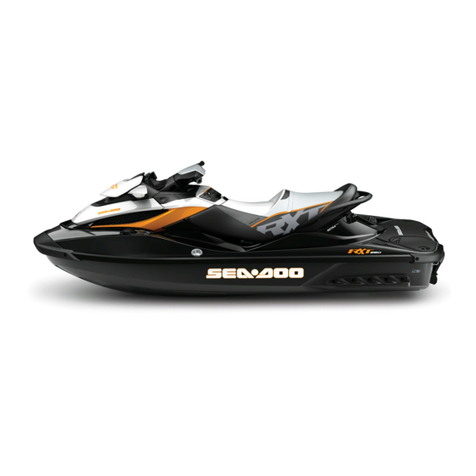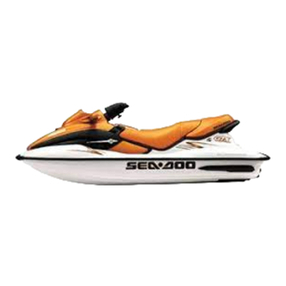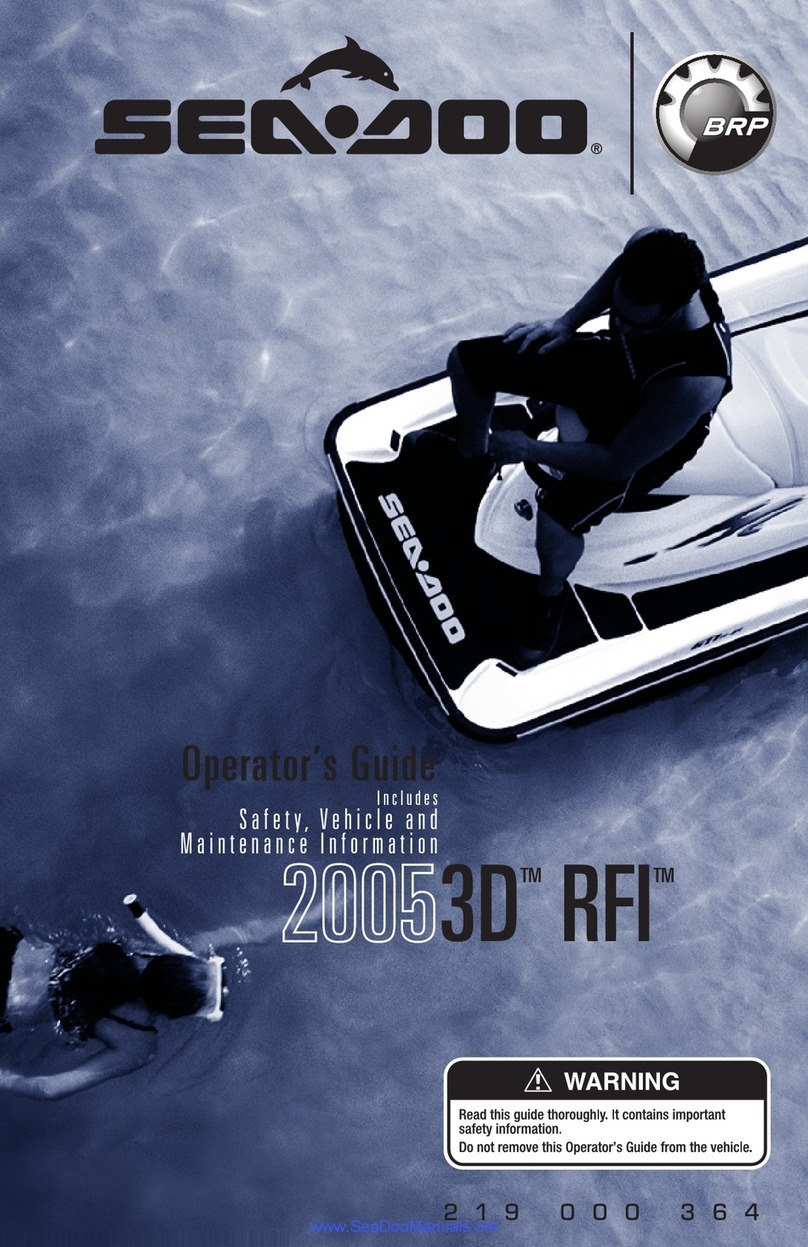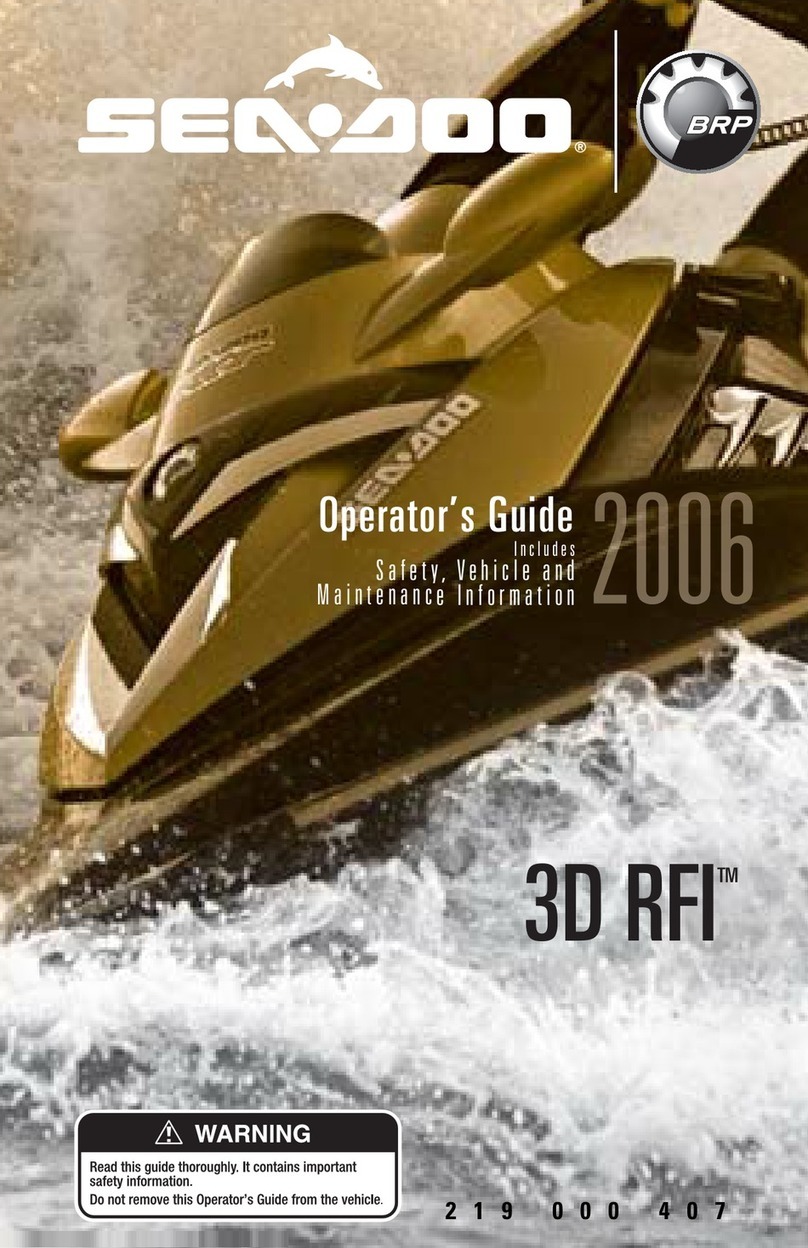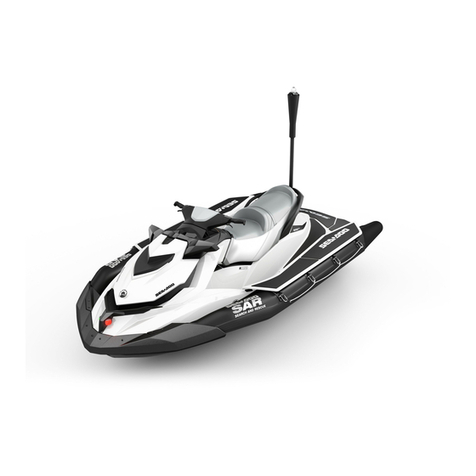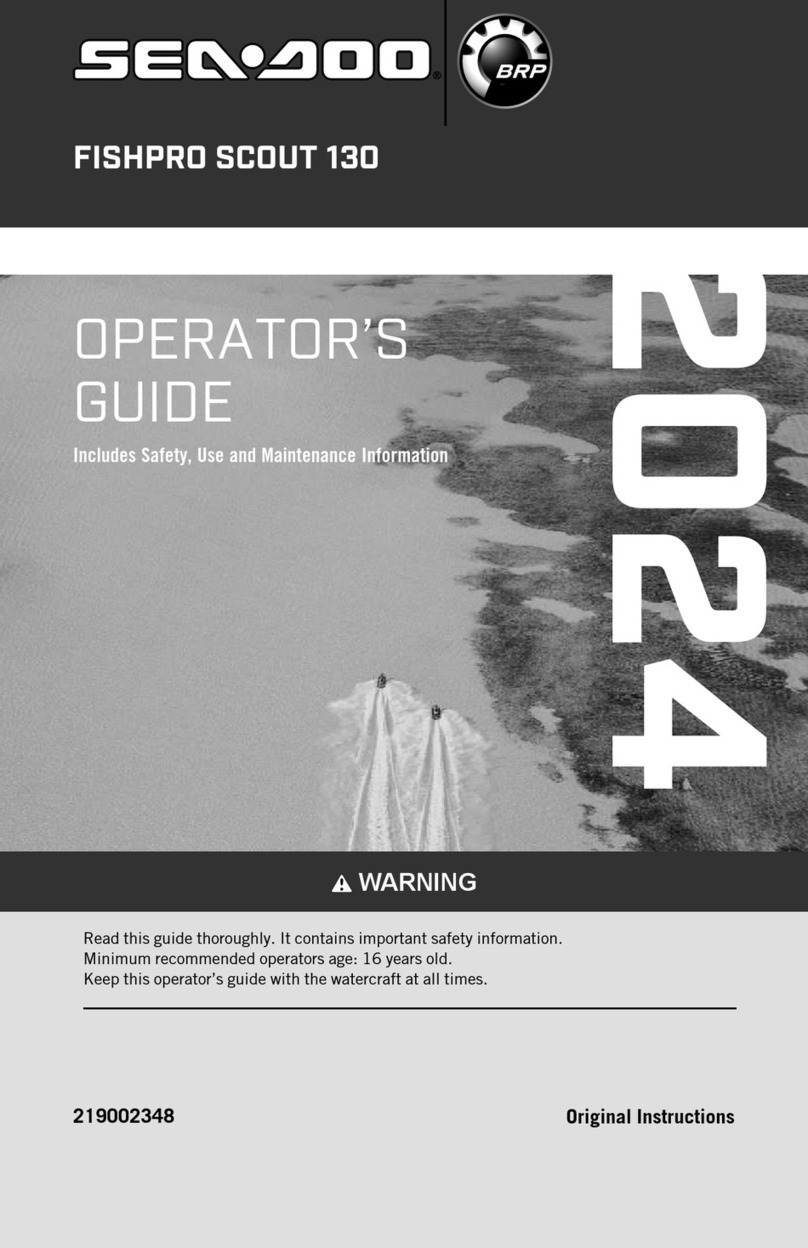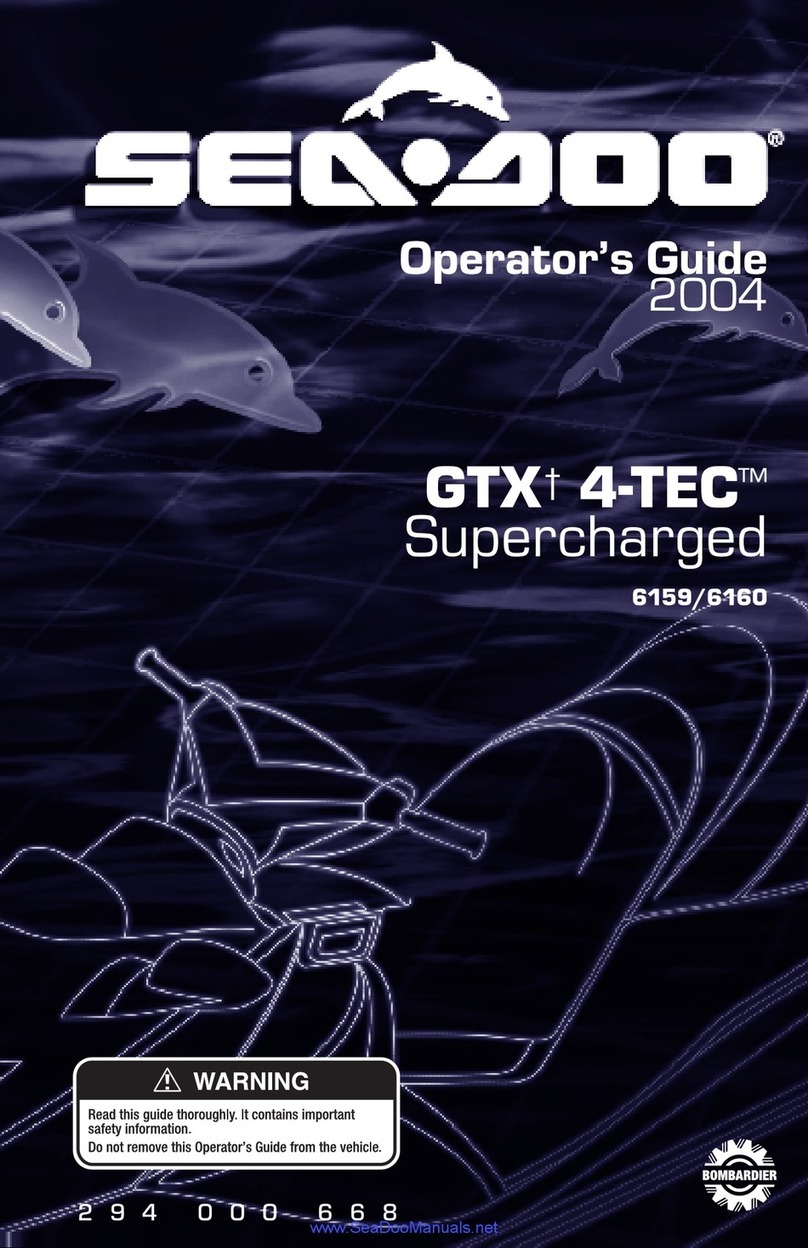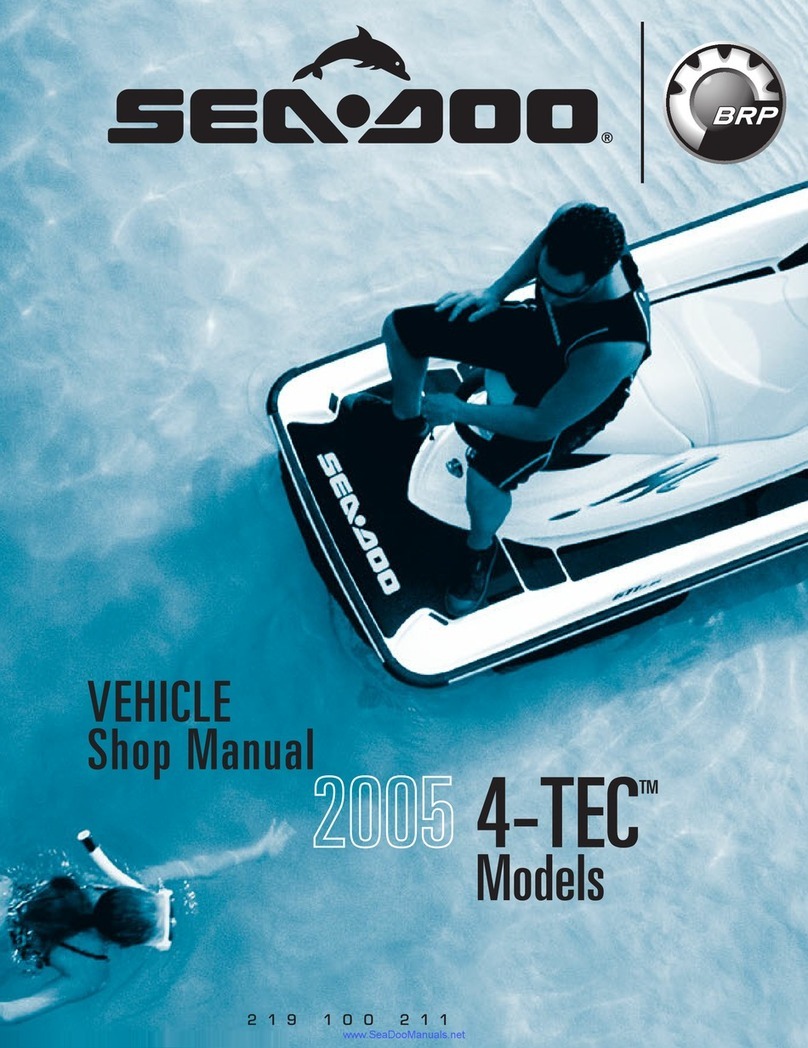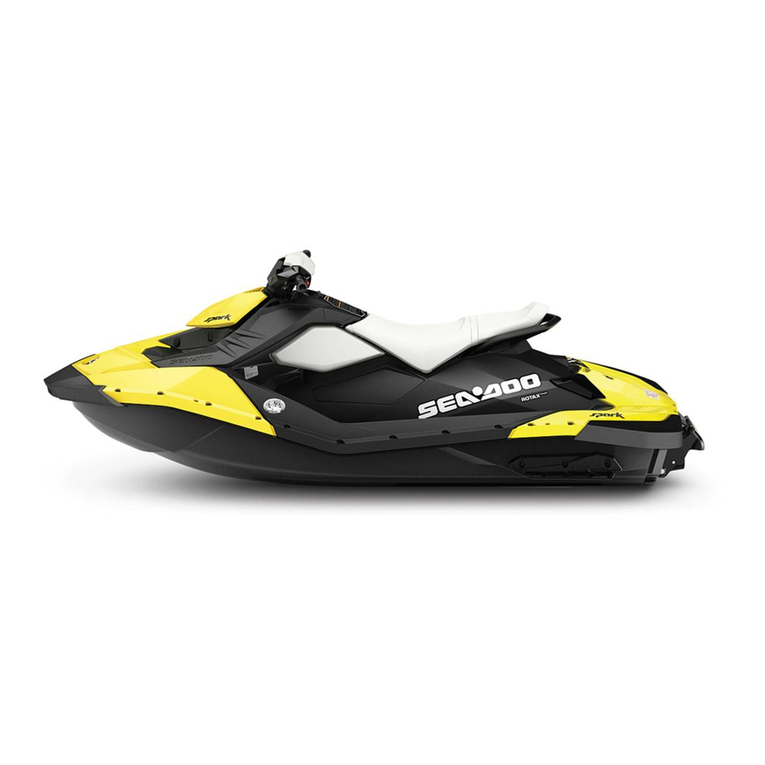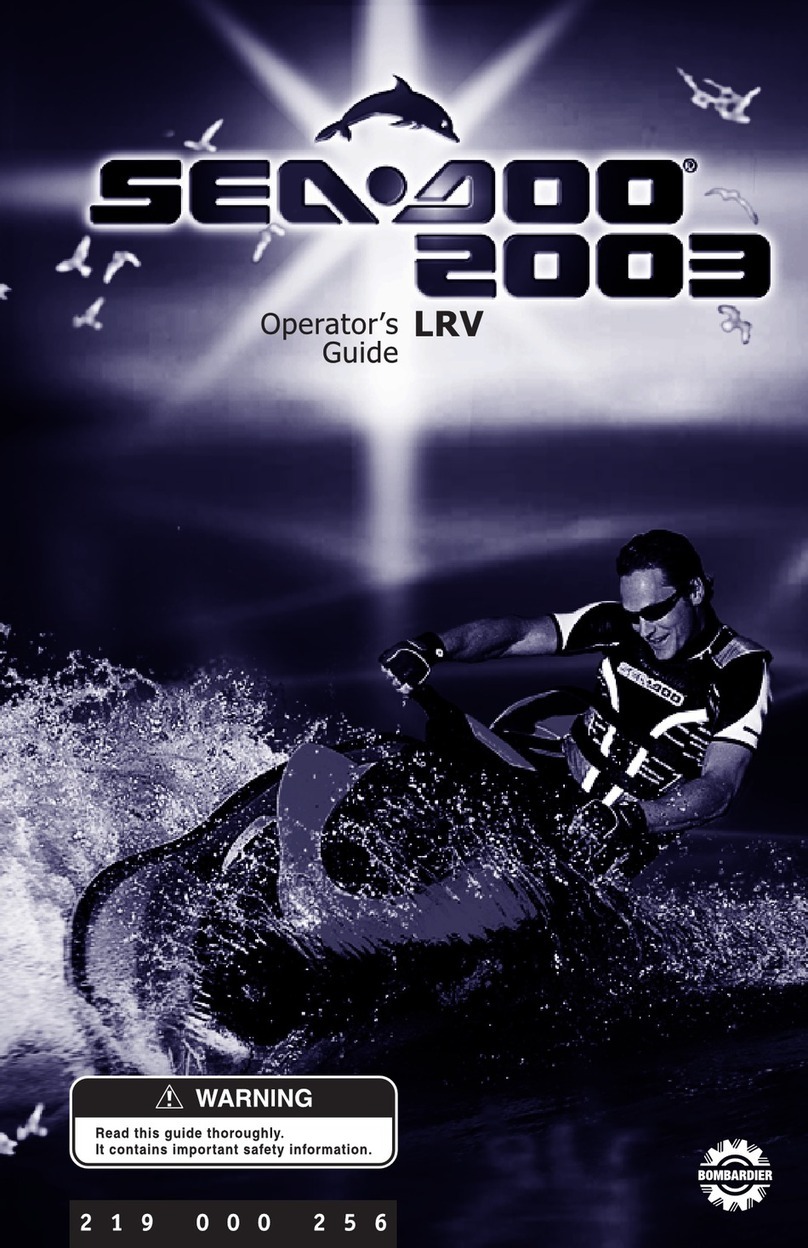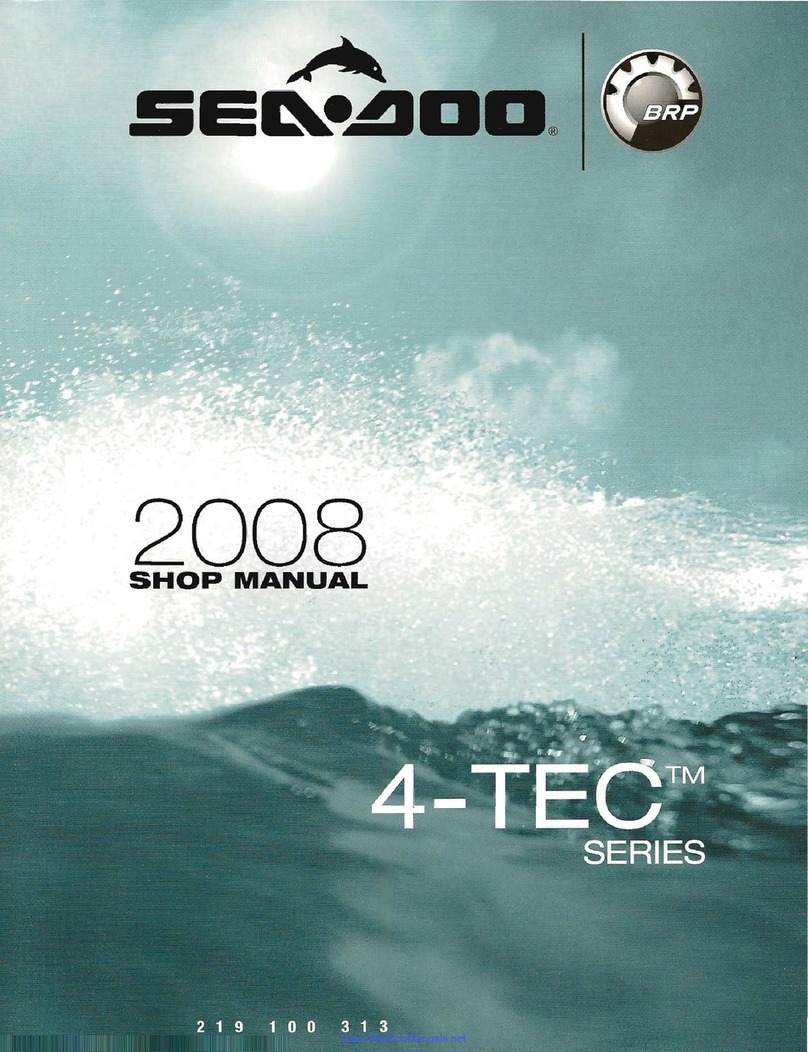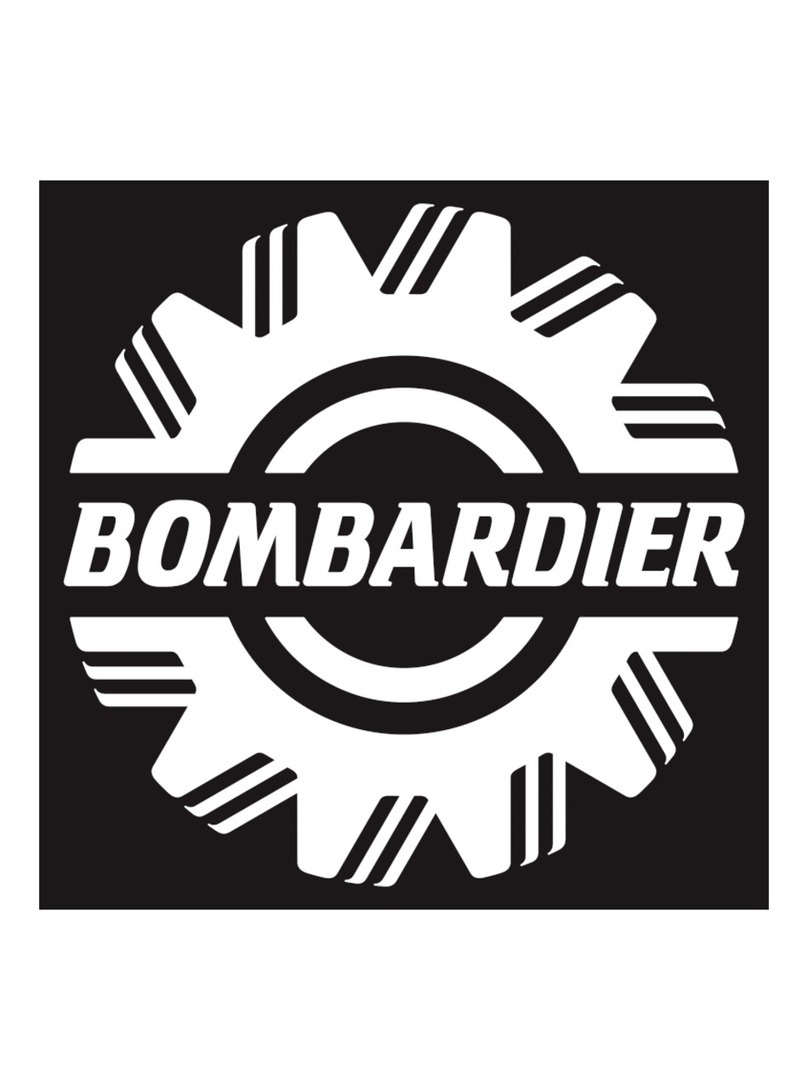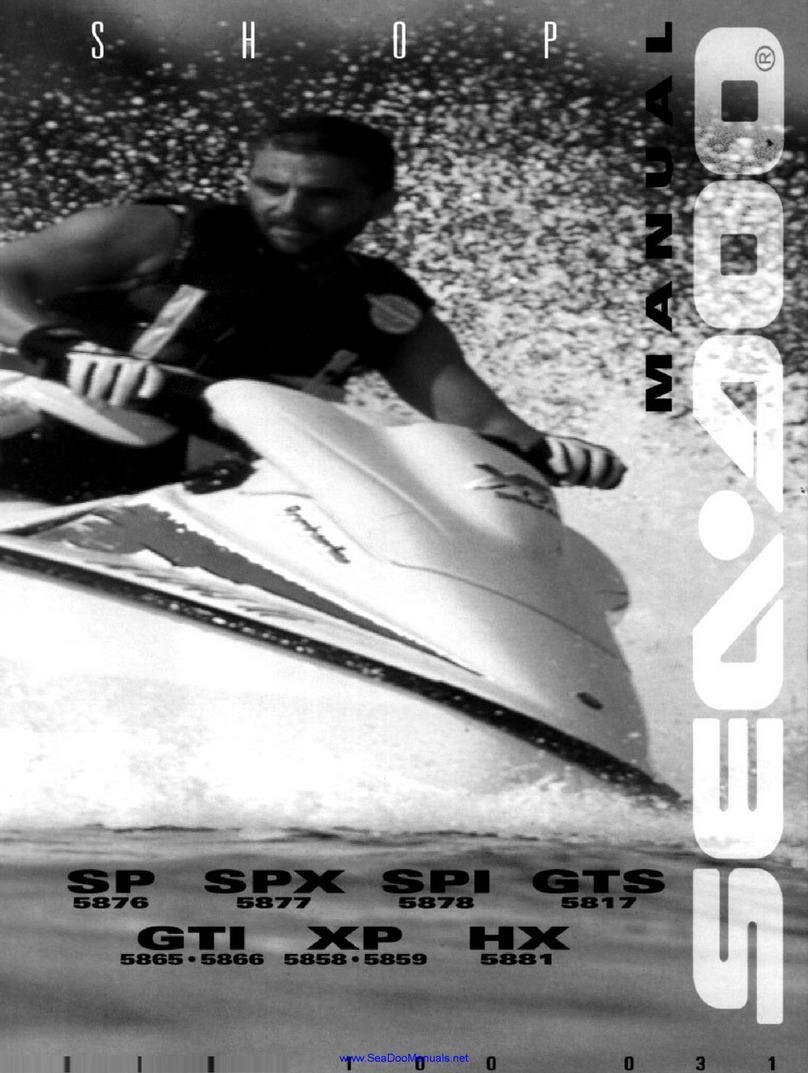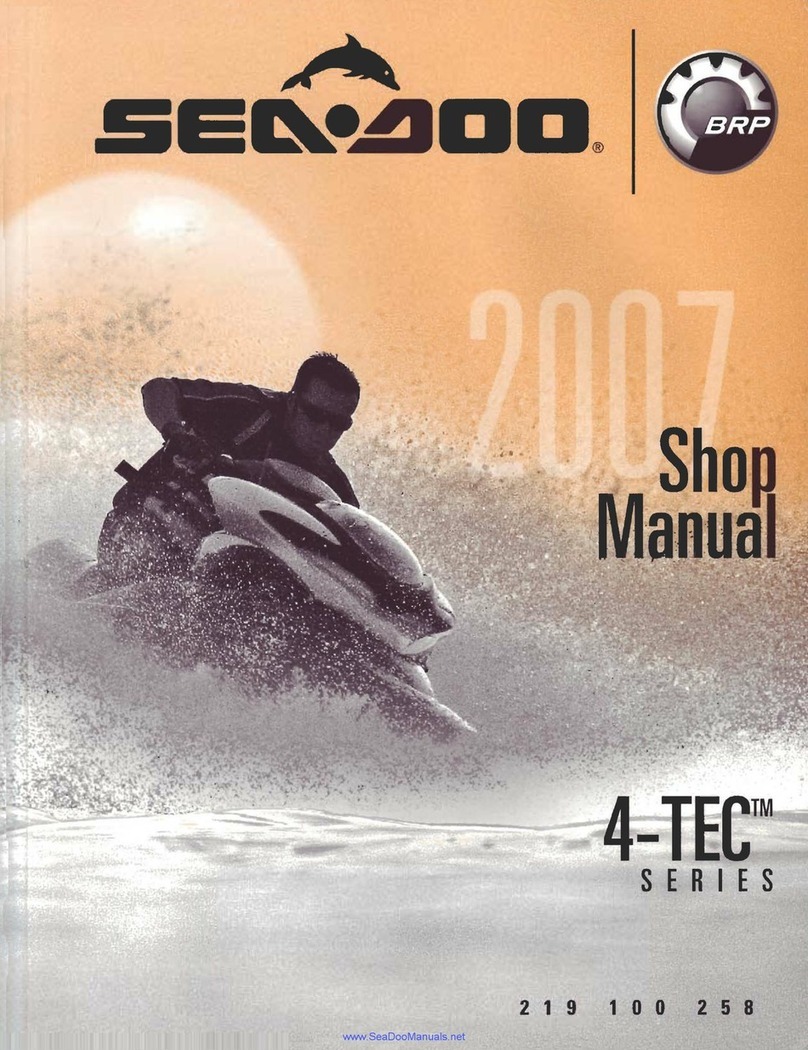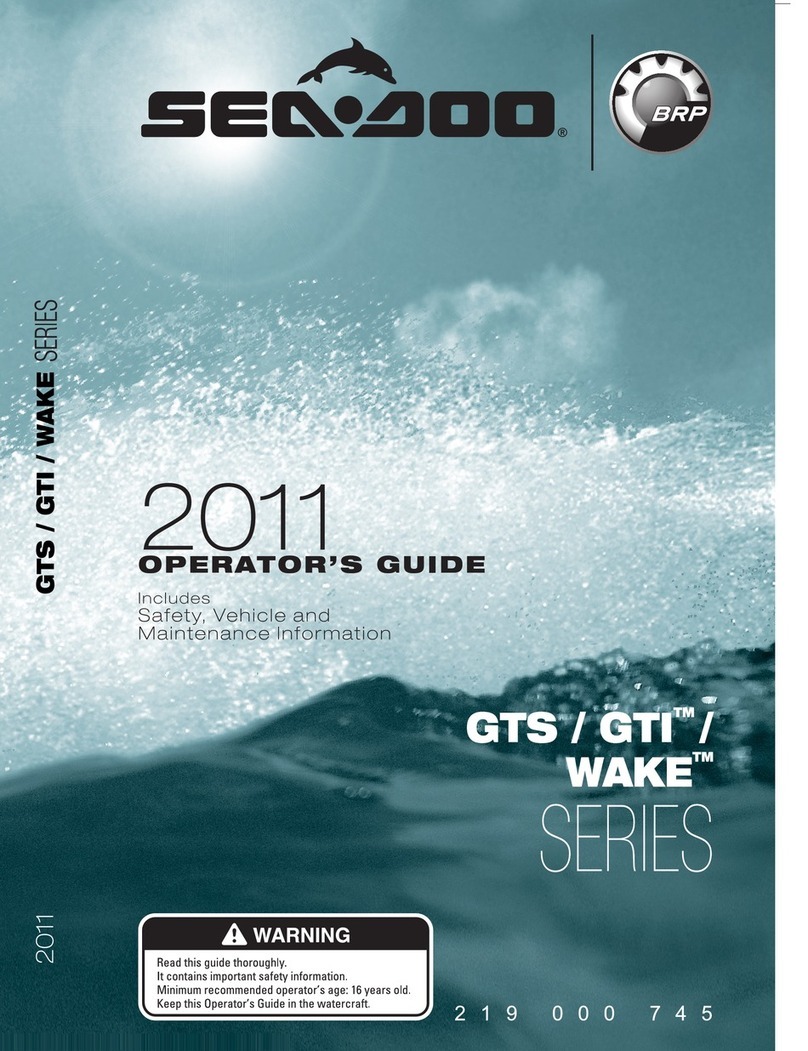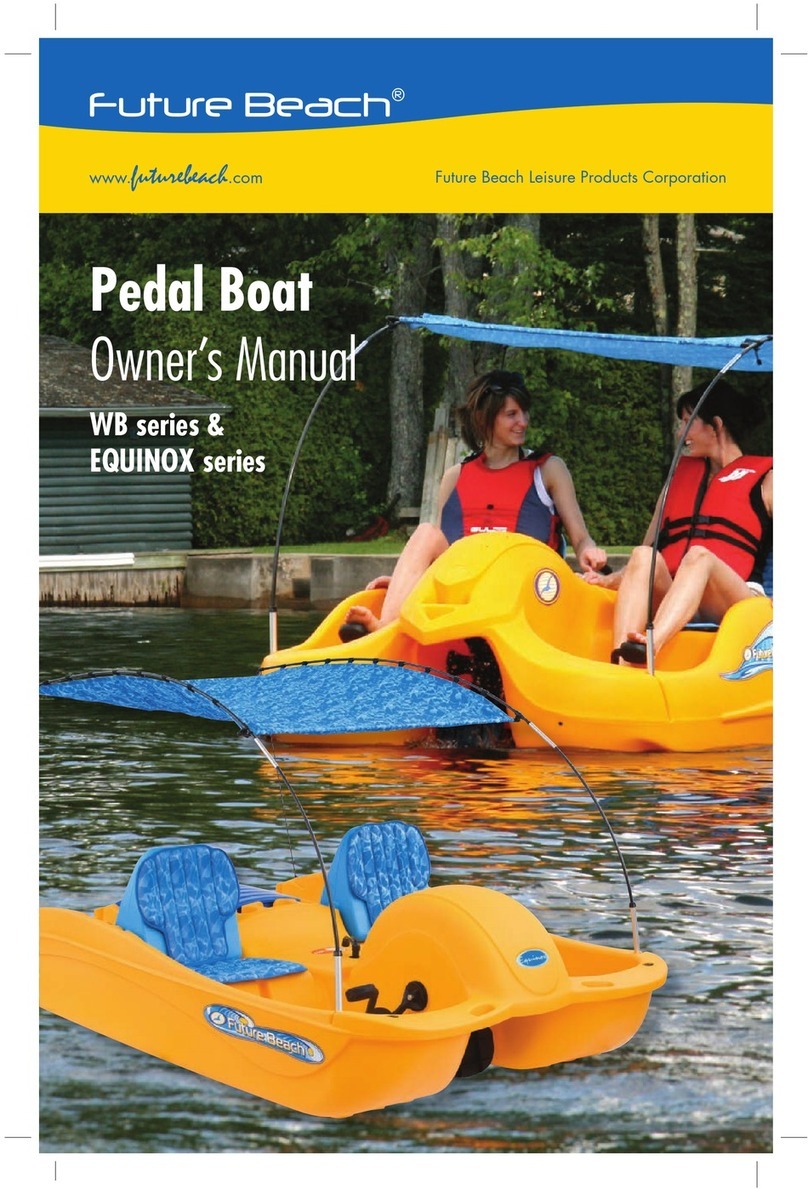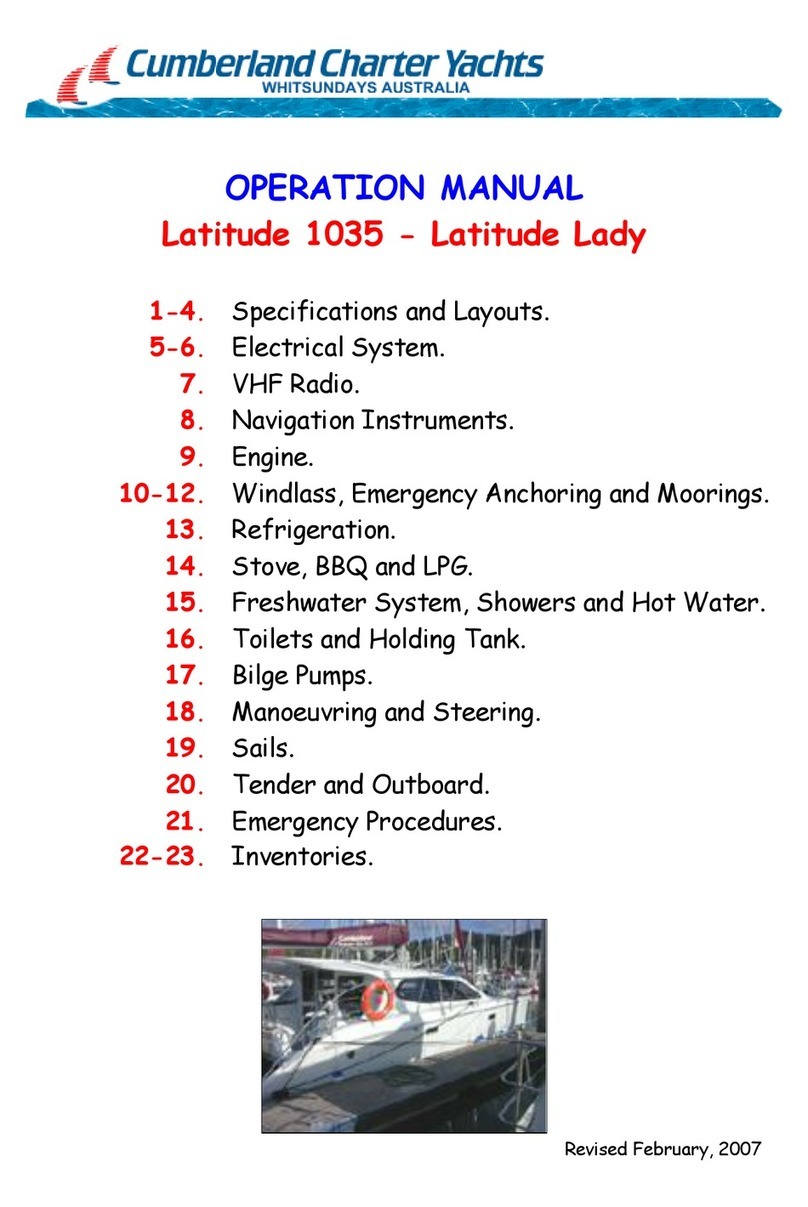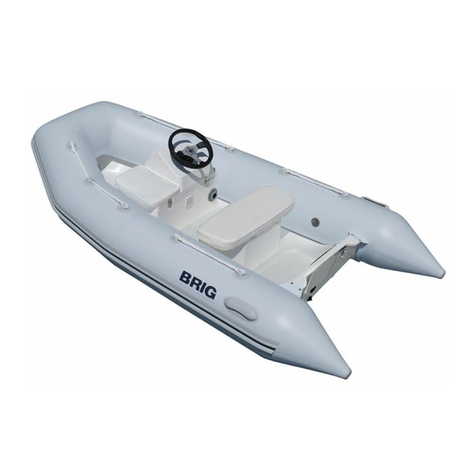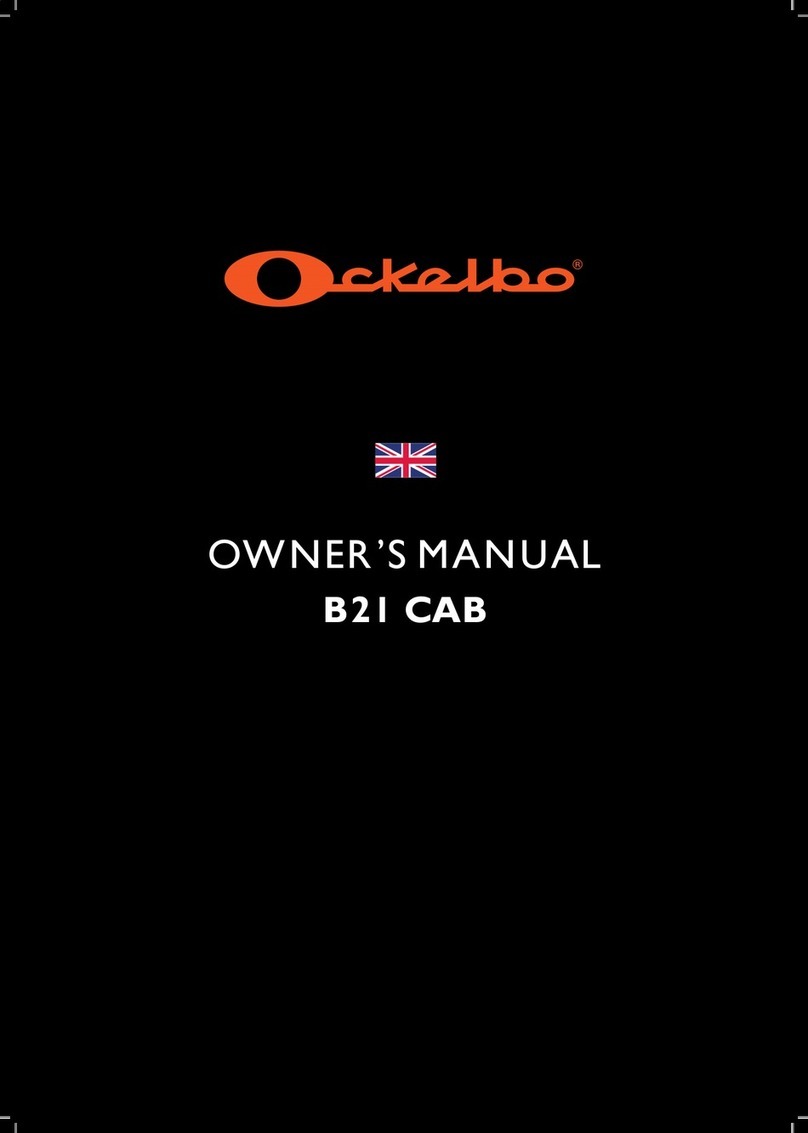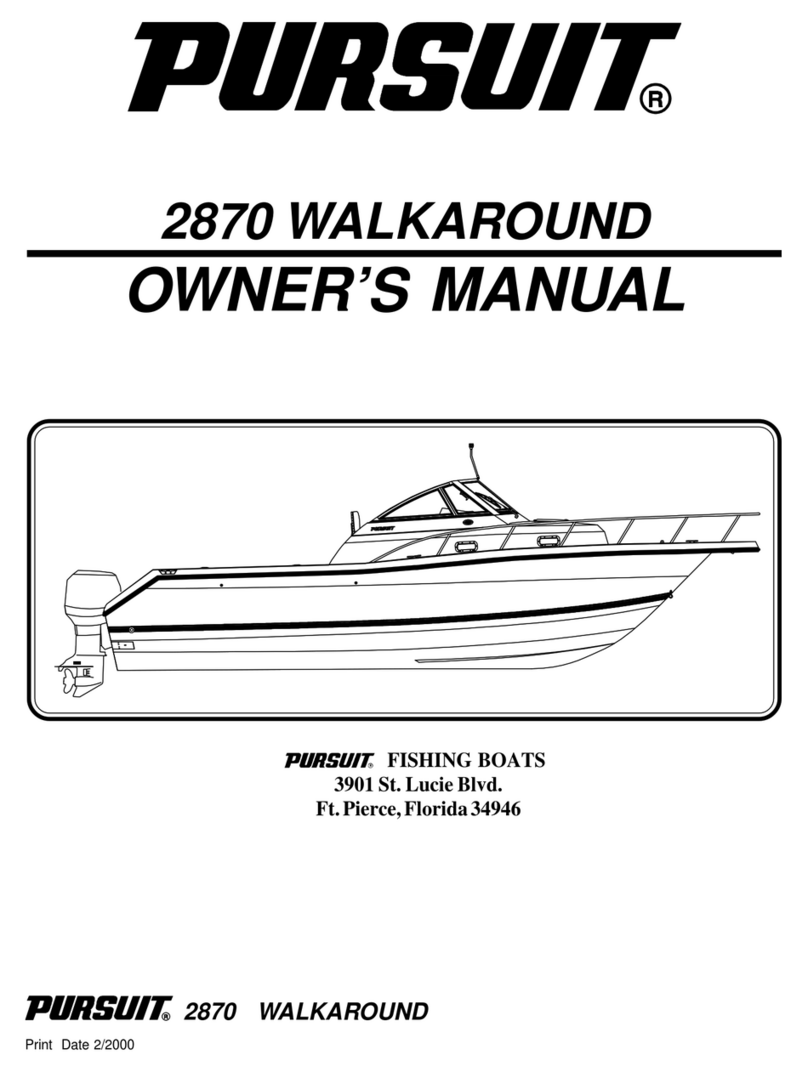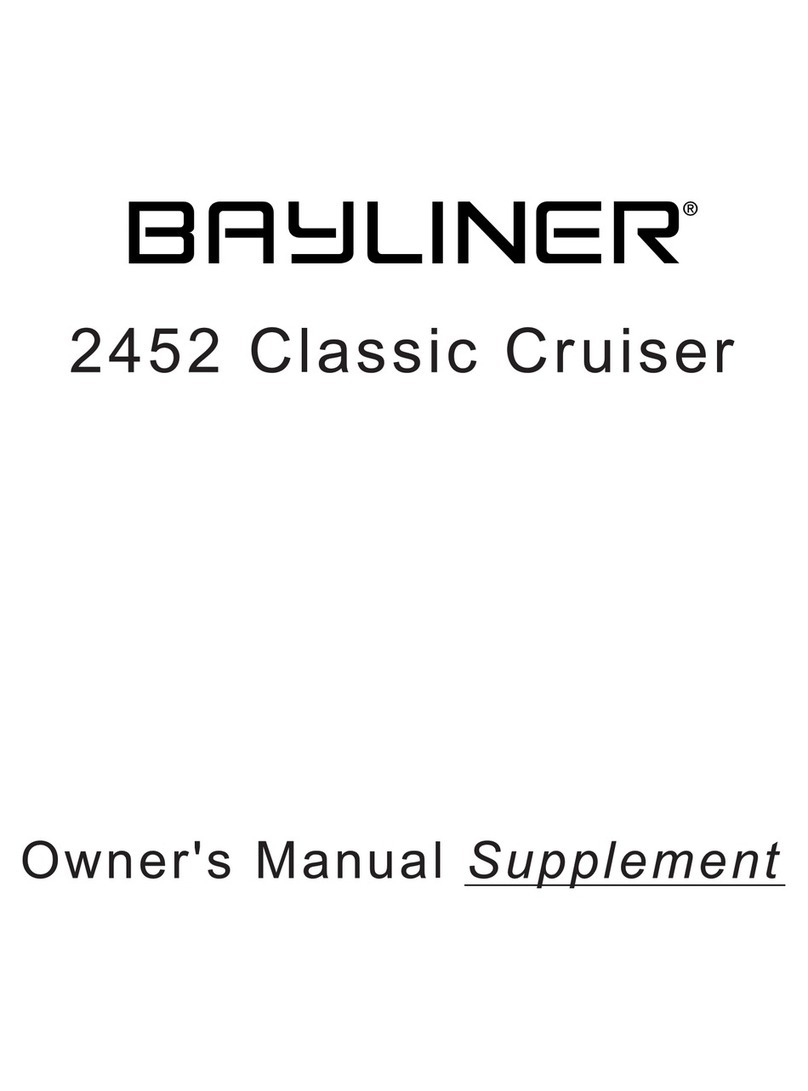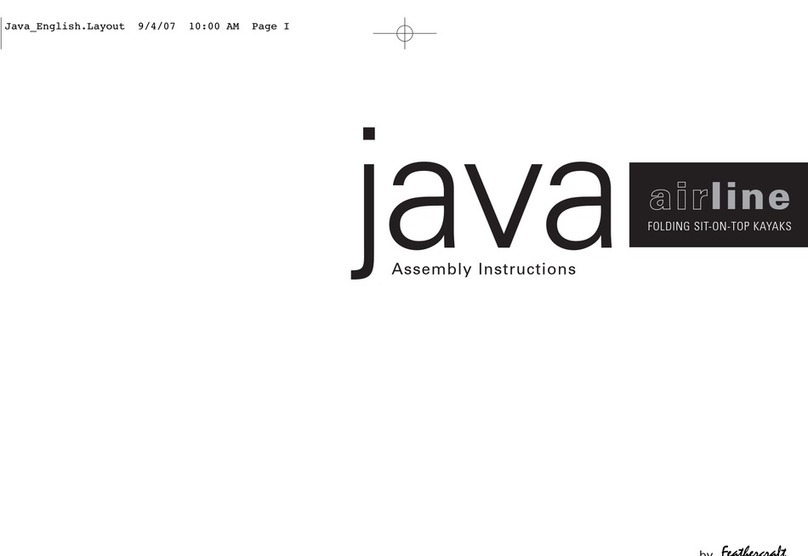
Using a crimped cup wire brush in a circular pattern, buff away the scuff or apparent
scratch. This should be done locally at first, at a lower speed while applying some pressure.
Once the scuff or scratch appears to be filled in, buff outward in a circular pattern, applying
less pressure at a higher speed. A reasonably smooth transition zone should become
apparent. Continue the process while increasing speed, decreasing pressure and switching
from c.w. to c.c.w. until the texture of the buffed area is acceptable. Optionally, blur away
the transition area with a flaw repair coating for plastics, or with spray paint for polypropyl-
ene. Spray sparingly from 12 inches (30 cm) away onto the affected area.
Polytec Resurfacing Technique
This technique is useful to repair a minor scuff or scratch as well as to improve the color,
texture, and transition following a repair. Practice on nonvisible areas before attempting.
Finishing On the outside surface, perform the Polytec Resurfacing technique on
the repair and surrounding area. The result should be a flush surface.
1) Groove the crack from the inside surface, about 1/3 of the materi-
al thickness. This groove can be made as wide as you need to work
comfortably, up to 45°. Groove should extend past crack by 1” (2.5
cm). Refer to the repair diagram above.
2) Remove all excess material from in or around the groove.
3) Cut the end of the rod at an angle to start with a clean tip. Scrape
the rod with a blade to remove any dirt or oil.
4) Place the rod end slightly beyond the beginning of the groove and
apply heat to both surfaces simultaneously. The tip of the heat
source should be within 1” (2.5 cm) of the weld joint.
5) While moving the heat source along the length of the rod, press
the rod into the groove to fill it. Lay down the rod until slightly past the
end of the groove.
6) Continue to fill the groove by adding layers. Each layer should
overlap the edges of the previous one. Overlap edges of the groove
as well. Wait for the material to become cool to the touch before
proceeding with the next layer. The material cannot become “over
cooled” if left a long time.
On the outside surface ONLY: Fill the groove until it is slightly beyond
flush with the original surface.
On the inside surface ONLY: Continue until the welding joint covers
3x the groove width on each side of the crack and is the same
thickness as the material itself. When in doubt, go wider.
7) Sand the weld to remove excess material. Using a fingernail,
check the joint between the weld and the hull for defects. If neces-
sary, groove the defect and apply another layer.
Step 7
7
7
TECH TIP
A common defect is the formation of an air pocket somewhere in the joint. Check for these bubbles
or waves between layers as you go along. When in doubt, sand away a small amount of the area
in question to verify.
Note: A hole can be repaired using the technique described
above. Use a piece of Polytec to block the hole; the hole and/ or
the piece may need to be trimmed to fit. A piece of Polytec left
over from a scrap part may be used if needed. Temporarily
secure the piece in place using aluminum tape. Follow the
procedure for Plastic Welding on a crack; treat the junction
between the two parts as the crack.
Transition area in work.




















